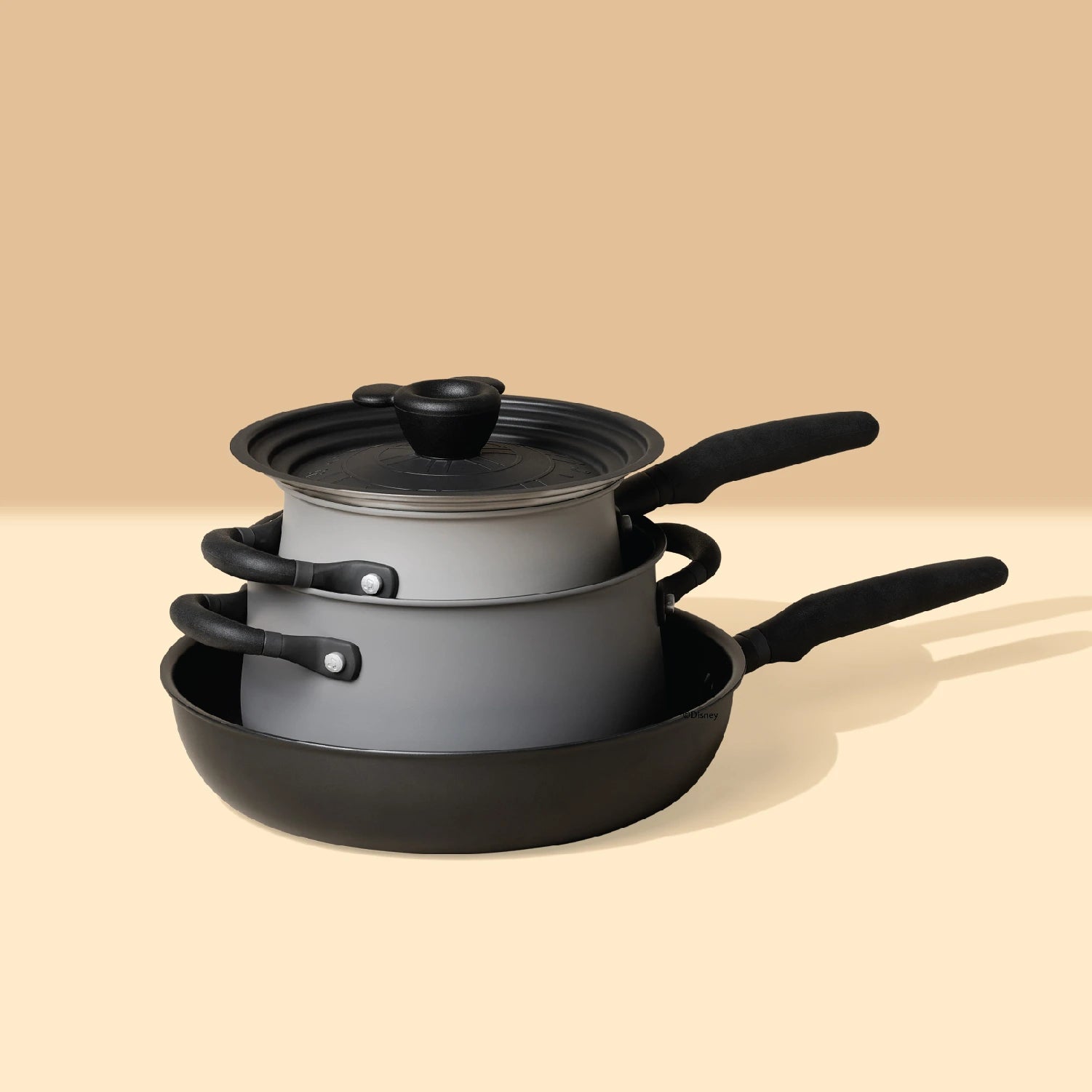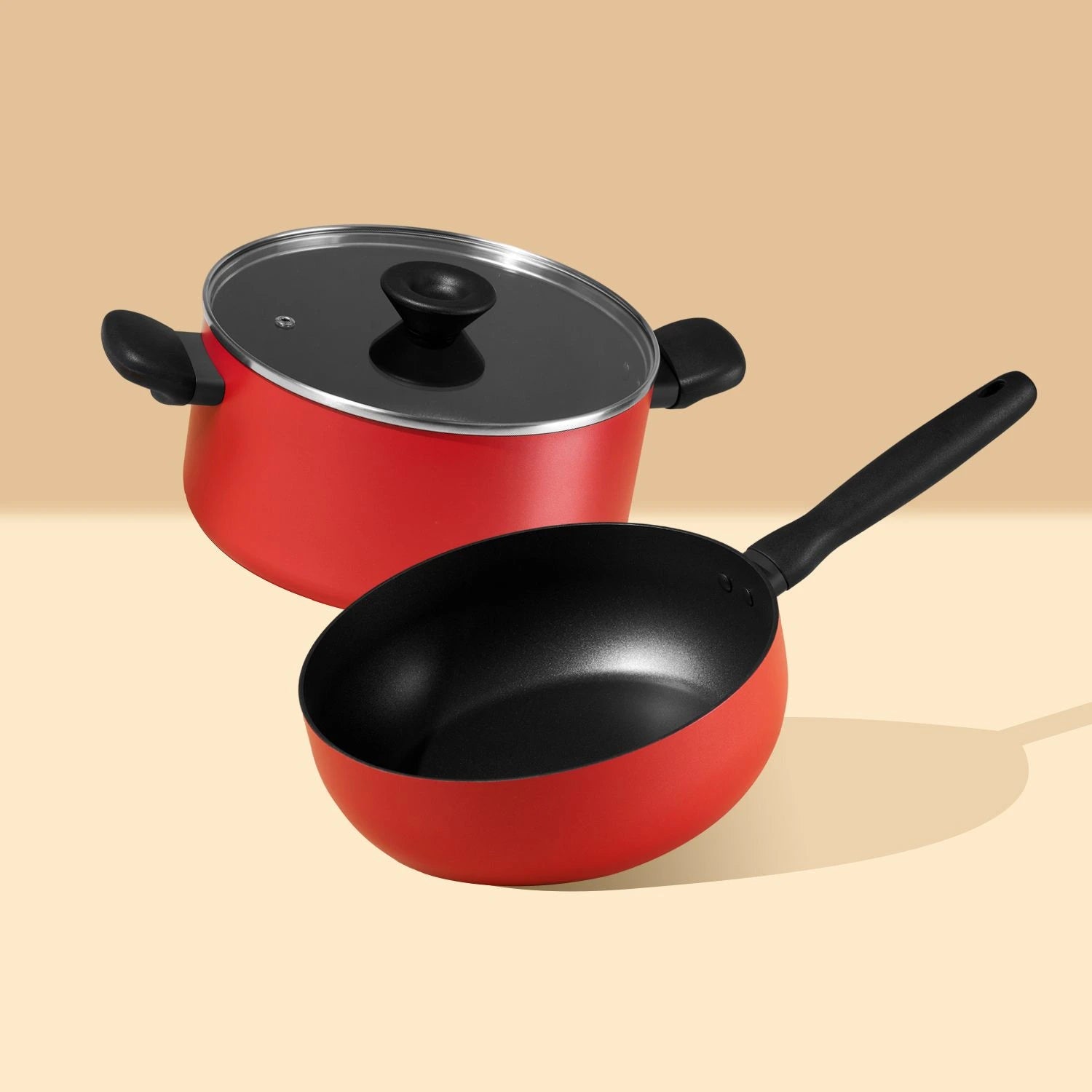Nonstick cookware plays a pivotal role in supporting a balanced diet for weight loss by facilitating healthier cooking practices. With its smooth nonstick surfaces, this type of cookware requires minimal oil or fats for cooking, allowing individuals to reduce calorie intake without compromising on taste or texture. By eliminating the need for excessive oil, nonstick cookware promotes portion control and healthier fat consumption, two crucial aspects of weight management. Additionally, the even heat distribution provided by nonstick pans ensures that food cooks evenly, preventing burning or sticking without the need for additional oil. From sautéing vegetables to searing meats, nonstick cookware offers versatility and convenience, making it an essential component of a balanced diet aimed at achieving weight loss goals.
Table of Contents
What Are Non-Stick Cookware?
Non-stick cookware refers to kitchen utensils and cookware with a special coating that prevents food from sticking to the surface during cooking. This coating, typically made from polytetrafluoroethylene (PTFE) or ceramic materials, creates a slick and smooth surface that allows for easy food release. Non-stick cookware is commonly used for frying, sautéing, and cooking delicate foods like eggs and fish, where sticking can be a common issue. The non-stick properties of this cookware make it easier to cook with less oil or fats, promoting healthier cooking practices. Non-stick cookware is available in various forms, including frying pans, saucepans, griddles, and baking sheets, offering versatility in the kitchen for a wide range of cooking tasks.
What Makes Non-Stick Cookware A Key Component Of A Balanced Diet For Weight Loss?
Non-stick cookware is a key component of a balanced diet for weight loss due to several reasons:
- Reduced Oil Usage: Non-stick surfaces require minimal oil or fats for cooking, allowing individuals to cut down on calorie intake without sacrificing flavor or texture. By eliminating the need for excessive oil, non-stick cookware promotes healthier cooking practices and portion control.
- Even Heat Distribution: Non-stick pans distribute heat evenly across the surface, ensuring that food cooks uniformly without hot spots or burning. This feature helps prevent the need for additional oil to prevent sticking or burning, resulting in healthier cooking outcomes.
- Versatility: Non-stick cookware is highly versatile and can be used for a wide range of cooking methods, including frying, sautéing, and baking. Its non-stick properties make it suitable for cooking a variety of foods, from eggs and pancakes to meats and vegetables, with minimal oil usage.
- Easy Cleanup: Non-stick cookware is typically easy to clean, as food residue is less likely to stick to the surface. This makes cleanup quick and hassle-free, encouraging individuals to cook at home more often and make healthier meal choices.
How Can You Use Non-Stick Cookware For Weight Loss?
You can use non-stick cookware for weight loss in several ways:
- Cooking with Less Oil: Non-stick surfaces require minimal oil or fats for cooking, allowing you to reduce calorie intake without compromising on taste or texture. Use cooking spray, small amounts of oil, or broth to lightly coat the pan instead of submerging food in oil.
- Portion Control: Non-stick cookware enables you to cook smaller portions of food without worrying about it sticking to the pan. This encourages portion control, which is essential for weight loss. Opt for smaller serving sizes to help manage calorie intake effectively.
- Healthy Cooking Methods: Non-stick cookware promotes healthier cooking methods such as grilling, sautéing, and stir-frying with minimal oil. These techniques help retain the natural flavors and nutrients of the ingredients while reducing the need for excess oil or added fats.
- Avoiding Fried Foods: Fried foods are often high in calories and unhealthy fats. With non-stick cookware, you can achieve a crispy texture without deep-frying by using less oil or opting for healthier cooking methods like baking or air-frying.
- Easy Cleanup: Non-stick surfaces are easy to clean, requiring less scrubbing and scraping compared to traditional cookware. This makes meal preparation less daunting and encourages you to cook at home more often, where you have better control over ingredients and portion sizes.
Meyer Nonstick Cookware: A Key Component of a Balanced Diet for Weight Loss:
Meyer Nonstick Cookware serves as a fundamental element in fostering a balanced diet conducive to weight loss. With its innovative design, this cookware facilitates healthier cooking practices that align with weight management goals. Utilizing Meyer Nonstick Cookware allows individuals to prepare meals with significantly less oil or fat compared to conventional cooking methods. By minimizing the need for excessive oil, it supports calorie reduction without compromising on taste or texture. Moreover, the nonstick surface ensures that food doesn't stick to the pan, promoting portion control and preventing overindulgence. This aspect is crucial in managing calorie intake effectively and maintaining a healthy weight. Additionally, the ease of cleaning associated with Meyer Nonstick Cookware encourages frequent home cooking, enabling individuals to have greater control over ingredient quality and portion sizes. Overall, integrating Meyer Nonstick Cookware into one's culinary repertoire can play a pivotal role in fostering healthier eating habits and achieving sustainable weight loss objectives.











Leave a comment